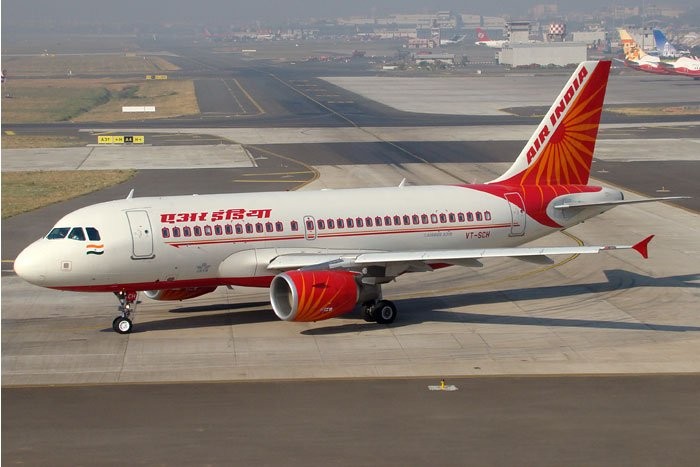
The government has made multiple attempts at turning around the loss-making Air India, trying unsuccessfully to disinvest the airline, pumping in more money to fund its day-to-day operations, making some operational improvements and finally talking of a four-pronged strategy for a complete turnaround. But the ground reality remains stark, the airline continues to bleed and band-aid solutions are unable to stop this bleeding.
After asserting in Parliament that provisional loss figures for Air India indicated a turnaround earlier this year, the government may again have to eat crow. As per the latest numbers published in the Public Enterprises Survey 2017-18, Air India lost Rs 15 crore on an average each day. The airline posted a net loss of about Rs 5338 crore when earlier, the government had said in Parliament that the provisional net loss figure was much lower, at Rs 3500 crore. So almost Rs 1800 crore got inexplicably added to the net loss. Of course, the latest figures are still “provisional” since the airline’s accounts have not yet been placed in Parliament. Total income grew in 2017-18 to Rs 23,900.48 crore from Rs 22,197.10 crore in the previous fiscal and even the net loss was a tad lower since in 2016-17 this figure was Rs 6281.54 crore.
Here’s another way to put the loss figure for 2017-18 in perspective: Air India was the second highest loss-making central public sector undertaking among 339 such units in the country last fiscal. Only BSNL made more losses than Air India and the airline accounted for almost 17% of the combined losses of all CPSEs in 2017-18. This loss figure does not include financials of the airline’s subsidiaries such as the engineering arm, Air India Express or the ground handling arm.
An airline official said debt was hurting its bottomline and that the payment of interest on the debt was almost equal to the daily loss figure. Here are some other operational highlights: Air India had the worst on-time performance among all domestic airlines almost throughout 2018, almost each month the airline topped the number of passenger complaints and as on date, it has about 19 aircraft on ground (4 of its Boeing 777s, 4 of the Dreamliners and 11 of the Airbus 320 family) due to want of spare engines.
Chairman and MD Pradeep Kharola said there has been significant performance improvement in the first nine months of the current fiscal. He said passenger revenue was up by Rs 2,100 crore in the first nine months (April-December) from Rs 12,900 crore to Rs 15,000 crore. The airline carried 7% more passengers in this period compared to the same nine months of the previous year and for the month of December alone, revenue growth from passengers was 23%. Kharola did not share the net profit/loss numbers for the nine months of this fiscal though, merely saying topline has improved due to better aircraft utlilisation and launch of 32 new flights in calendar 2018.
And on Air India having the worst on-time performance in 2018 among all domestic airlines, Kharola said it ‘followed a "hub and spoke" model and some delays were inevitable'. In a written reply in Lok Sabha this week, MoS Civil Aviation Jayant Sinha said there were various reasons for AI’s OTP being the worst among all domestic airlines: engineering, crew, ground handling issues besides ATC and weather related delays.
Meanwhile, Kharola also spoke of marketing initiatives such as launching a bidding option for filling up business class seats across its domestic and international flights. Air India offers about 72,000 daily seats across its network, of which 4500 are business class seats with occupancy hovering between 50-60%. With bidding possible at the time of booking a ticket, the airline expects much better occupancy on business class where discounts could reach up to 75% of the original cost of a business class seat. For a flight to New York for example, business class could be availed for under $500 additional payment, over and above the economy class fare. This is almost half the amount one has to shell out for wanting an upgrade after arriving at the airport.
Some cost-saving measures such as making domestic economy class catering totally vegetarian, uplifting meals on long haul return flights from India instead of western destinations, increasing the aircraft utilisation etc have also been taken.
But these initiatives, though well intentioned, may not help the airline financially in any significant way. The government has said at various times these last few months that it is launching a global search for professionalising the management of Air India. It has also has plans to transfer almost Rs 30,000 crore of the debt on AI’s books to a special purpose vehicle to ease the burden on the airline and to sell off some of the subsidiaries independently besides also raising money from the land parcels the airline owns.
Kharola said AI received Rs 2600 crore this fiscal from the National Small Savings Fund and the government has promised fresh equity support of Rs 2345 crore, of which Rs 1600 crore has come in. The remaining amount is also expected before the financial year closure in March, which will be partly used to get spare engines for aircraft on ground.
But as is evident, the government appears to be offering piecemeal solutions to the Air India problem, there is no long term turnaround strategy in sight. Why the government continues to be in the business of running airlines (and many other services) is a question which remains unanswered, as it continues to pump more of tax payers’ funds into Air India. The airline has already received more than Rs 27,000 crore of the Rs 30,231 crore equity support pledged to it under an earlier turnaround plan.


.jpeg)

